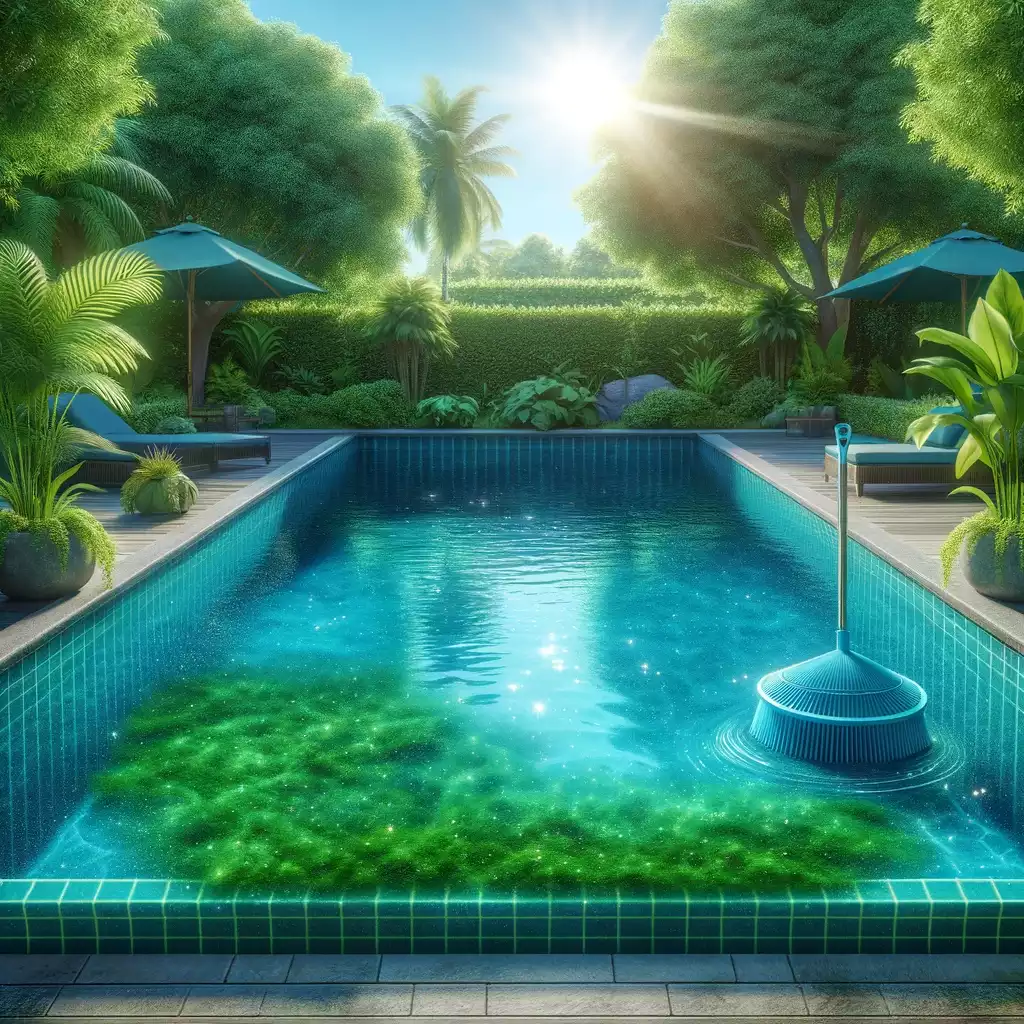Maintaining a clear pool can be challenging. Algae growth is one of the main culprits. To combat this, pool owners often turn to pool algaecides for help. These chemicals play a crucial role in maintaining water clarity. Understanding how they work and choosing the right product is essential. This article explores the benefits of pool algaecides and how they improve water clarity.

I. How Algae Affects Pool Water
Algae can rapidly multiply in pool water. They thrive in warm and sunny environments. When left untreated, algae turn pool water green or cloudy. This affects both the pool’s appearance and hygiene. Algae can cling to pool walls and floors, making them slippery and unsafe. Swimmers often find algae unpleasant and unsanitary.
Algae also consume nutrients and release organic waste. This process further clouds the water. Chlorine alone often struggles to manage high algae levels. That’s where the best pool algaecide comes into play. By using a targeted approach, pool algaecides help restore the pool’s clarity quickly.
II. Types of Pool Algaecides
Several types of pool algaecides exist. They differ in their effectiveness and purpose. The most common types include copper-based, quaternary ammonium compounds (quats), and polymer algaecides.
1. Copper-Based Algaecides
Copper-based pool algaecides are powerful. They bind to algae cells, breaking them down. These algaecides are effective against green and black algae. However, they may stain pool surfaces if overused.
2. Quaternary Ammonium Compounds (Quats)
Quats are another popular choice. They disrupt the algae cell membranes. This causes the algae to die quickly. Quats are ideal for preventing algae rather than eliminating heavy infestations. They are also less likely to cause staining.
3. Polymer Algaecides
Polymer pool algaecides are non-foaming and non-metallic. These algaecides work well with chlorine. They are gentler on pool surfaces and swimmers. Their primary role is to prevent algae from forming. However, they can also help eliminate small algae blooms.
Understanding the different types of pool algaecides helps pool owners choose the best product for their needs. For severe algae problems, copper-based options may be the best. For maintenance, quats or polymer algaecides often work better.
III. Benefits of Using Pool Algaecides
1. Enhances Water Clarity
One of the primary benefits of using pool algaecides is improved water clarity. Algaecides eliminate or prevent algae growth. This prevents cloudiness and helps the pool maintain its pristine appearance.
2. Reduces Chlorine Demand
Algae consume chlorine quickly. When algae bloom, chlorine levels drop. This forces pool owners to add more chemicals. By using the best pool algaecide, chlorine demand is reduced. This leads to less chemical usage and a healthier swimming environment.
3. Prevents Algae Stains
Algae can leave unsightly stains on pool surfaces. These stains can be tough to remove. Using pool algaecides prevents algae from taking hold. In turn, this protects the pool’s surfaces and prevents costly cleaning.
4. Improves Pool Safety
Algae make pool surfaces slippery. This increases the risk of accidents, especially around the pool deck. By eliminating algae, pool algaecides make the pool area safer for everyone.
IV. Choosing the Best Pool Algaecide
Selecting the best pool algaecide depends on various factors. First, pool owners must identify the type of algae present. Green algae are common, while black algae are more stubborn. The type of algae dictates the best course of treatment.
For regular maintenance, polymer or quaternary ammonium algaecides work well. These products prevent algae growth without affecting water chemistry. For heavy infestations, copper-based algaecides are often the best pool algaecide option. However, caution is necessary to avoid staining.
Additionally, pool owners should consider water volume. Larger pools may require higher concentrations of algaecide. Overuse can lead to foaming or chemical imbalance. Therefore, always follow the manufacturer’s guidelines when using pool algaecides.

V. How to Apply Pool Algaecides
Proper application is key to effectiveness. Pool owners should first test the water’s pH and chlorine levels. Balanced water chemistry ensures pool algaecides work as intended. Then, calculate the right amount of algaecide based on the pool’s size.
After adding the algaecide, allow the water to circulate for several hours. This distributes the chemicals evenly. Avoid swimming immediately after applying the product. Most pool algaecides recommend waiting at least 24 hours before using the pool.
For best results, repeat the treatment regularly. Algaecides are most effective when used as a preventive measure. Pool owners should apply the best pool algaecide weekly or bi-weekly during peak swimming season.
VI. Conclusion
In conclusion, pool algaecides play a vital role in maintaining water clarity. Algae can quickly turn a clear pool into a cloudy mess. However, using the best pool algaecide keeps algae under control. The result is a safer, cleaner, and more inviting pool.
By understanding the different types of algaecides and their benefits, pool owners can make informed choices. Proper use and regular application ensure algae problems are kept at bay. Ultimately, investing in quality pool algaecides leads to a more enjoyable swimming experience.
 Instant
Quote
Instant
Quote Email
Us
Email
Us